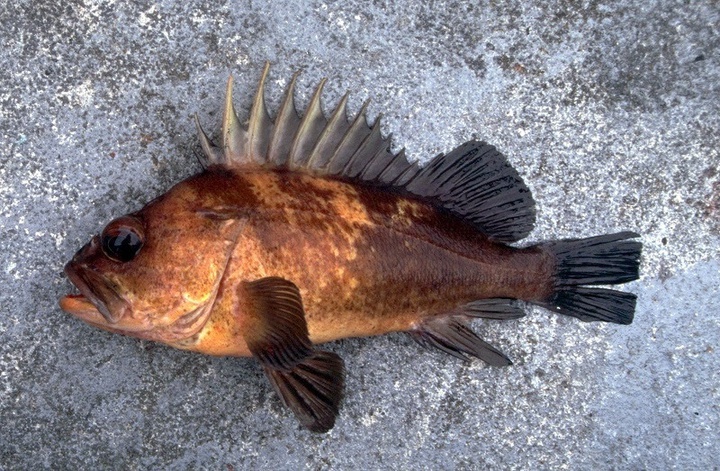Jessica Cejnar Andrews / Monday, Sept. 25, 2023 @ 4:42 p.m. / Ocean
Following Groundfish Fishery Closure, Del Norte Fishermen Plan Community Meeting to Advocate For Next Year's Season

CDFW scientists say the 2023 quillback rockfish harvest has exceeded the overfishing limit set by federal regulations. | Photo courtesy of the California Department of Fish and Wildlife
Two weeks after the Pacific Fisheries Management Council let the current closure of the nearshore groundfish fishery stand, Andrea Spahn is looking toward next year’s season.
Spahn, a local angler, said she hopes to get as many people as possible to a meeting at 5:30 p.m. Thursday at the Lake Earl Grange to decide who will represent Del Norte County at the Council’s meeting in Garden Grove from Nov. 1-8.
“One of our goals is to decide who we’re going to send and raise the money to send them,” she told the Wild Rivers Outpost on Monday, adding that it will either be Harry Adams or Steve Huber who both own charter boat businesses. “We’re trying to get as much support as possible.”
Adams is also a Crescent City Harbor commissioner.
According to Spahn, the Council is expected to decide the future of the 2024-25 nearshore groundfish season at its November meeting. She said she hopes to get as many locals as possible to write letters to the Council advocating for next year’s season.
Spahn said she also expects charter boat captains, a representative of the Del Norte County Board of Supervisors and Crescent City Harbor District and the Tri-Agency Economic Development Authority at Thursday’s meeting.
“We need to get merchants and stuff involved in this,” she said. “I’ve got a guy today that’s going to take a round of little fliers to all the merchants and let them know about the meeting because this affects them.”
Local fishermen and elected officials fear that the California Department of Fish and Wildlife’s decision to close the nearshore groundfish fishery to protect the quillback rockfish on Aug. 21 will economically devastate the community.
At the PFMC’s Sept. 12 meeting in Spokane, District 3 Supervisor Chris Howard pointed out that anglers are impacted by both the closure of the salmon season as well as the Smith River Complex wildfires.
Howard produced a letter from his colleagues and called for the Council to require CDFW conduct hook and line surveys of quillback rockfish — which he and many local fishermen don’t want — instead of relying on trawling data to make their decision.
“It is a perfect storm that many of us won’t survive,” Howard told the Council. “It’s difficult to see such decision-making based on pretty outdated models and fed by limited data to no data. And, for us, that’s difficult to stomach.”
The Pacific Fisheries Management Council voted 7-4-2 in favor of letting the CDFW’s emergency nearshore groundfish season closure stand.
As of Aug. 21, the recreational boat-based groundfish fishery between Cape Mendocino and the Oregon border was only allowed seaward of the 50 fathom — 300 foot — Rockfish Conservation Area boundary line.
The Department of Fish and Wildlife closed the fishery after realizing the quillback rockfish catch for the season was nearing the overfishing limit of 1.04 metric tons by the end of July, according to Craig Shuman, the department’s marine region manager.
CDFW closed the nearshore groundfish fishery in the Mendocino, San Francisco and Central management areas on Sept. 1 to protect the quillback.
Offshore fishing only rules went into effect in the Southern Groundfish Management Area, between Point Conception and the U.S.-Mexico border on Sept. 16.
According to Spahn, local charter boat captains have invited CDFW scientists on their boats to show them where quillback rockfish congregate. Their argument, she said, is there is no shortage and most people don’t want them anyway.
Local fishermen have also argued for more education, especially for tourists, to use descending devices when releasing groundfish back into the water, Spahn said. This will ensure that groundfish remain alive when they’re being thrown back, she said.
“A lot of these fish when you bring them up from 120 feet, their swim bladder comes out of their mouth,” she said. “What we have on our boat is just a clamp with a heavy weight on it. We clamp it onto their lips with another rod, a separate rod and reel, and we release the fish still attached to the rod and reel and once they get down to the bottom the pressure returns. We give a little jerk on the clamp and it releases the fish and they swim away happily.”
CLICK TO MANAGE